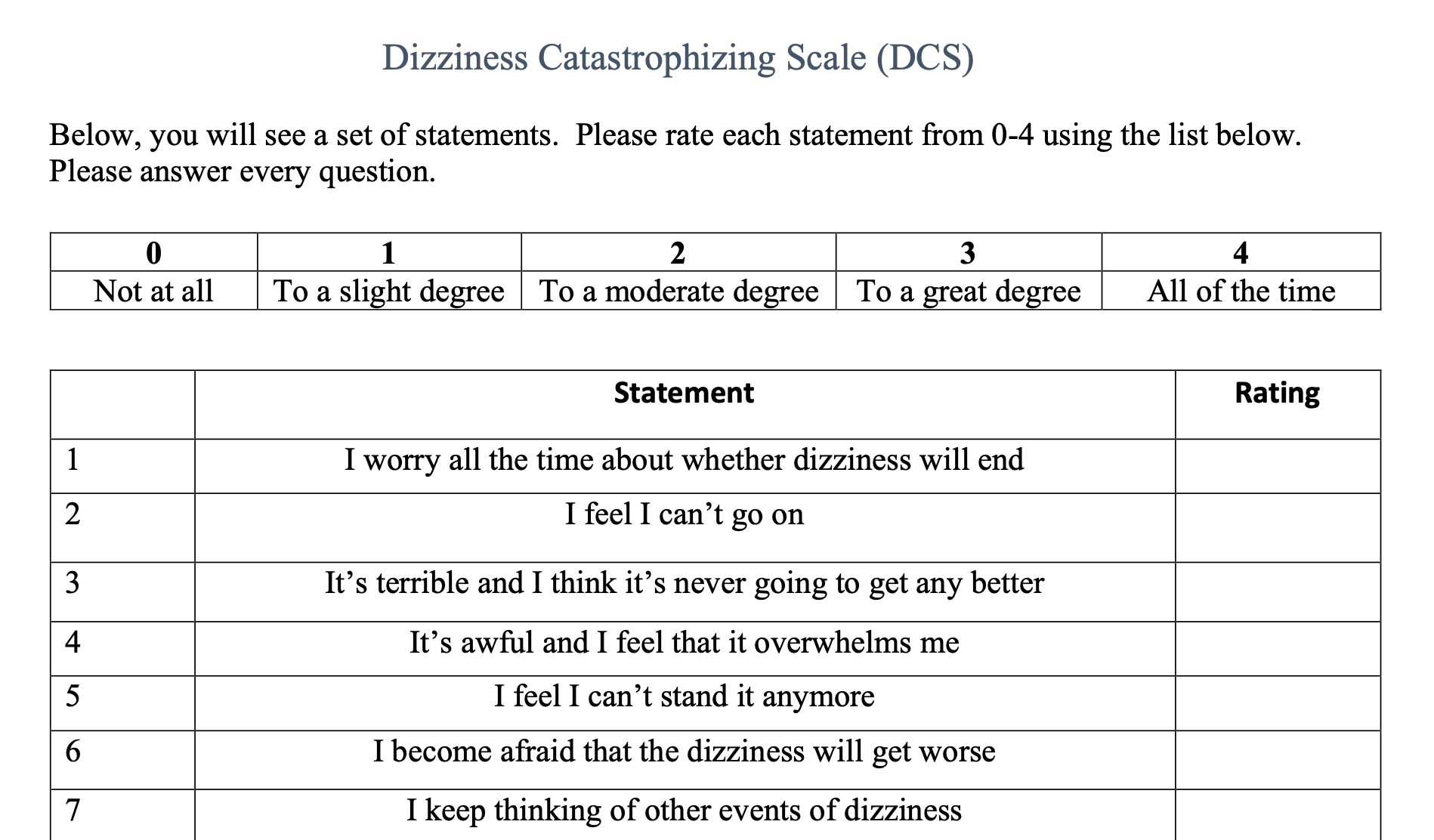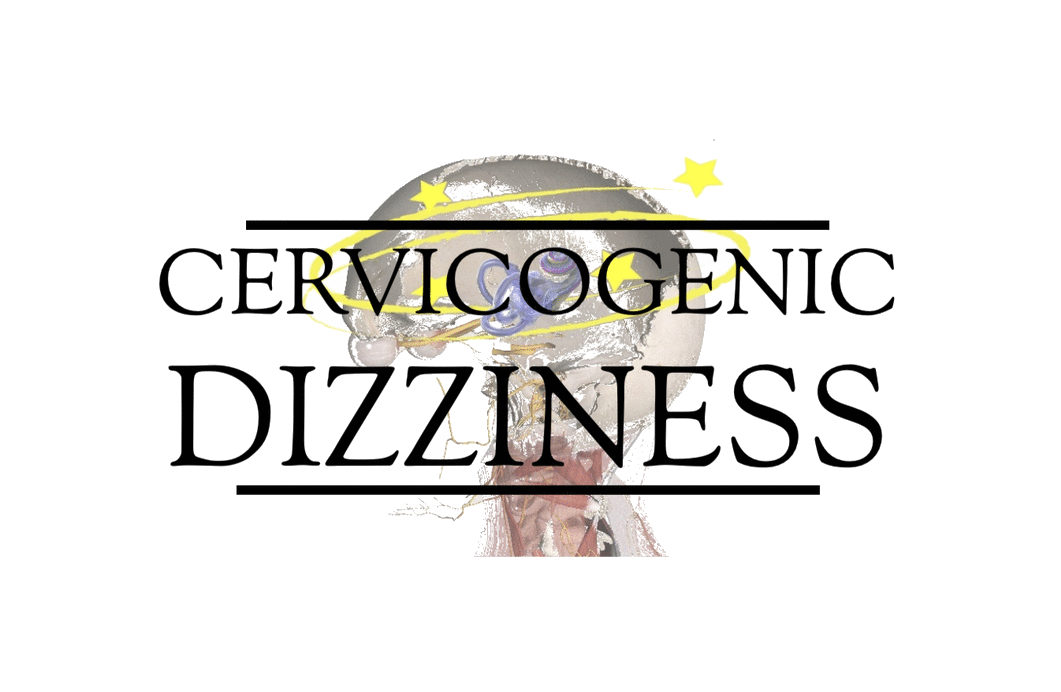The following are tools that we recommend you have as essential equipment to Diagnose & Manage Cervicogenic Dizziness purposely and effectively.
Entire Reference Library of Research

600+ REFERENCES FOR DIAGNOSIS AND TREATMENT
This file is a compilation of years collecting research articles and organizing within Cervicogenic Dizziness diagnosis and treatment realms. Feel free to contact me for any full texts.
DOWNLOAD HERE*FREE with coupon code: CGDreferences#

LEVEL OF EVIDENCE MANAGEMENT OF CERVICAL DIZZINESS
Wouldn’t you want a breakdown of ALL of the management evidence to treat Cervicogenic Dizziness? From Meta-Analyses to Case Reports, we have it here. You’re welcome.
DOWNLOAD HERE*FREE with coupon code: CervicalRules#
Cervical Kinesthetic Sensibility

JOINT POSITION ERROR TESTING
A widely used clinical tool, the joint position error testing chart has research on its validity going back to Revel’s work in 1994. Even though not an inclusion criteria in RCTs, it is validated within the cervical dizziness field with other pieces of literature. This is a must to examine cervical movement sense with head on trunk disturbances. Thanks to Drs. Rob Landel & Julia Treleaven for their initial clinical design of this refitted pattern.
DOWNLOAD PDF
Z PATTERN
We utilize this pattern with testing cervical movement sense and treatment within our sensorimotor training. This is a simple, but reliable and valid pattern for head on neck disturbances. It is not widely used as circular target in Cervicogenic Dizziness research, but has huge implications for cervical movement sense. Thanks to our Dr. Ernst & colleagues in Switzerland for their research & design of this pattern.
DOWNLOAD PDF
FIGURE-8 PATTERN
We utilize this pattern with testing cervical movement sense and treatment within our sensorimotor training. This is a simple, but reliable and valid pattern for head on neck disturbances. It is not widely used as circular target in Cervicogenic Dizziness research, but has huge implications for cervical movement sense. Thanks to our Dr. Ernst & colleagues in Switzerland for their research & design of this pattern.
DOWNLOAD PDFVestibular Testing

Ruling out peripheral disorders is necessary to truly diagnosis a single entity of Cervicogenic Dizziness. Vestibular equipment to rule out or even diagnosis and treat an appropriate canal is key to successful outcomes. We like to shop at Vestibular First and support our fellow PT colleagues.
VESTIBULAR FIRSTPsychological Testing
Dizziness and psychological (i.e. anxiety and/or depression) issues usually coincide. Pain and psychological (i.e. generalized anxiety) issues usually coincide. Read our article with links and screens to help you rule out psychological influences to symptoms.
LEARN MORE
Obligatory Outcome Measures

DIZZINESS HANDICAP INVENTORY
The Dizziness Handicap Inventory has also been described previously by Susan Reid and colleagues as a diagnostic screening tool to rule in or rule out Cervicogenic Dizziness. We recommend utilizing the scale provided below and compare to symptoms provided, alongside an objective examination, to determine if appropriate to treat the cervical spine and to show functional improvement in a patient suffering from dizziness. Click here to learn more about Impaired Sensorimotor Outcome Measures for Clinicians.

NECK DISABILITY INDEX
The Neck Disability Index (NDI) is a self-administered, condition-specific functional status questionnaire used to determine how neck pain affects a patient's daily life and to assess the self-rated disability of patients with neck pain. This outcome measure can be considered the gold standard in assessing function for cervical pain research. It is utilized in most trials associated with management of Cervicogenic Dizziness.
DOWNLOAD HERE
VERTIGO SYMPTOM SCALE
The Vertigo Symptom Scale (VSS) is used as a measure of dizziness symptoms. The VSS assesses how frequently participants have experienced 15 various forms of dizziness during the previous month. It is rated on a scale ranging from 0 to 4 and has a maximum score of 60.
DOWNLOAD HEREOptional Sensorimotor Outcome Measures

VISUAL COMPLAINT INDEX
The Visual Complaint Index consists of options to rate visual symptoms and there have been many that have been shown to directly relate to neck pain and dizziness, hence Cervicogenic Dizziness. We recommend utilizing the scale provided below and compare to symptoms provided, alongside an objective examination, to determine if appropriate to treat the cervical spine and to show functional improvement in a patient suffering from dizziness. Click here to learn more about Impaired Sensorimotor Outcome Measures for Clinicians.
DOWNLOAD HERE
SPACE AND MOTION DISCOMFORT
The “Space and motion discomfort” (SMD) describes dizziness that is provoked by visually provocative situations (i.e. grocery stores, malls, ceiling fans). To date, there are no specific studies utilizing the SMD II with Cervicogenic Dizziness, however, several visual symptoms included in the index are linked with potential cervical involvement from inadequate kinesthetic awareness. Click here to learn more about Impaired Sensorimotor Outcome Measures for Clinicians.
DOWNLOAD HERE

